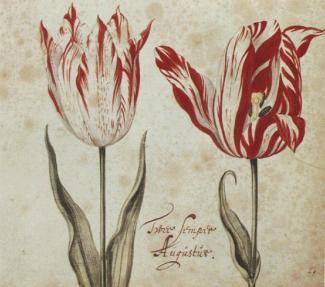
Even before the establishment of official diplomatic relations in 1612 with the Ottoman Empire, various plants originally from the Ottoman Empire came to Europe, and also reached the Netherlands. Most of these were introduced in the second half of the 16th century, although new plants were also introduced in later centuries. The most famous introduction is the tulip, which over time developed into a symbol for both Turkey and the Netherlands. As early as 1613 --less than 50 years after the introduction of the bulb in Europe-- Dutch tulips were given as a present to Sultan Ahmed I. The increasing popularity of the tulip in the Netherlands eventually led to the infamous tulip mania of 1637. Apart from the bulbs and the flowers themselves, tulips also became an important ornament on various objects such as Dutch tiles and ceramic objects. Another 16th century introduction was the hyacinth. This flower initially led an inconspicuous life in the Netherlands, but in the late 17th century and early 18th century became extremely popular in Europe, resulting in a true hyacinth mania in the 1720s and 1730s. This (double) Dutch hyacinth also returned to the Ottoman Empire in the 1730s and resulted in a small Ottoman hyacinth mania. Dutch hyacinths were exported to the Ottoman Empire throughout the 18th and 19th centuries. For both the Dutch and the Ottomans these bulbs formed an important aspect of their culture (both as a plant and as an ornament in art).
Turkey is still an important country for horticulture, especially because there are rich flora and horticultural relations between Turkey and the Netherlands. These relations are (economically) relevant, not in the least because of the immense importance of Dutch flower and plant trade. Turkey will also participate in the 2012 Floriade in the Netherlands.

